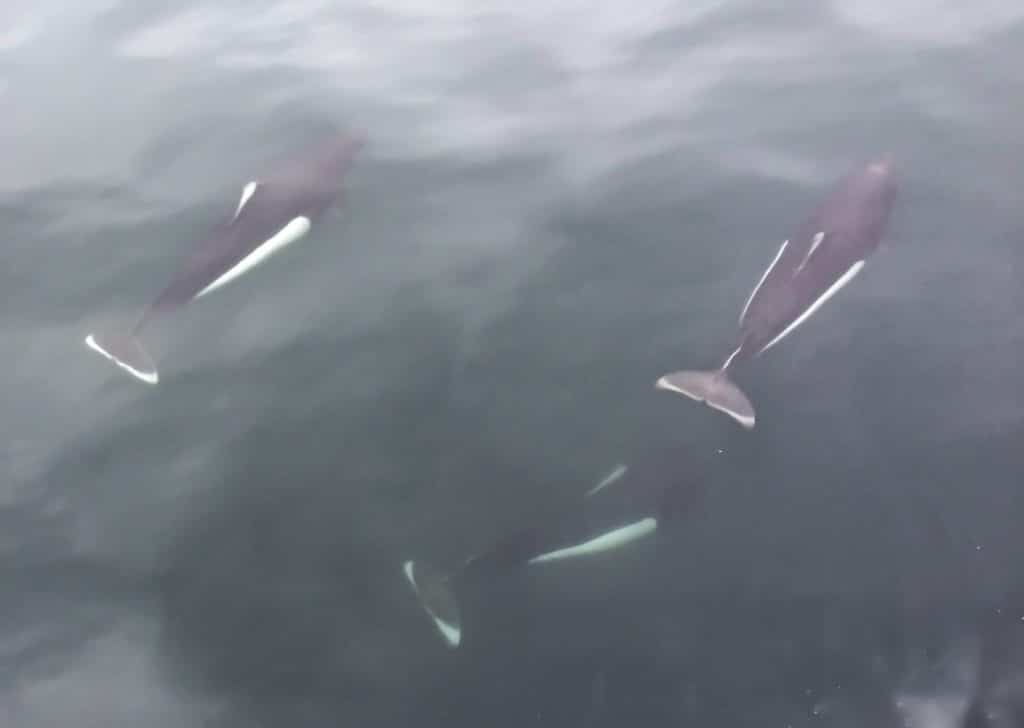Scientific Name
Phocoenoides dalli
Conservation Status (IUCN)
Least Concern (evaluated but not qualified for any other category)
Interesting Facts
There has been evidence of hybridization between Dall’s and harbour porpoises in British Columbia. Hybrids (often nearly identical in appearance to one or the other of the parents) possibly account for 1-2% of the Dall’s porpoise population off southeastern Vancouver Island, Canada.
The species is named after the American naturalist William Healey Dall (1845-1927). While William Dall collected a sample and made field notes in 1873, it was Fredrick W. True, mammal curator at the US National Museum, who made the official species description in 1885, and dedicated the animal to his friend William Dall.

Range
North Pacific Ocean including the Sea of Okhotsk, the Bering Sea, the Aleutian Islands, and along the west coast of North America as far south as Southern California. The International Whaling Commission currently recognizes 11 populations of Dall’s porpoise in the North Pacific Ocean.
Physical Description and Identifying Features
Almost entirely black body with bright white patches on the belly and on the flanks. They have a stocky body with a small head and short beak, small flippers and a robust tail stock. Males have a pronounced hump in front of the dorsal fin during the reproductive season. Calves are more of a grey color, and the flank patches are more muted than in the adults.

The Dall’s Porpoise is the largest porpoise species, reaching 210-220 cm long and 200 kg. There is some sexual dimorphism in size with females being slightly smaller at 160-206 cm long. The size difference between the sexes varies across the species range.
Behavior and Ecology
Usually found in groups of 2-10, though oceanic populations can be found in larger numbers. These animals are often found bow riding on boats. In southern British Columbia, Dall’s porpoises have been found to prefer coastal waters that range from 150-250m in depth. Though they do occur coastally in some regions, Dall’s porpoise are primarily an oceanic species. Dive times are short at 2-4 minutes.
The species is preyed upon by Transient (also called Bigg’s) killer whales.

Reproduction
Females reach sexual maturity between 4-7 years, males from 3.5-8 years old. Most females will mate in summer about a month after giving birth to a calf, with males physically competing for females. Gestation is thought to be 10-12 months long.
Lifespan
8-20 years, though animals older than 10 are rare.
Diet
Varied diet of fish and cephalopods.
Conservation Concerns
This species has been the target of human consumption in Japan, with current annual targets of about 15,000 animals.
Environmental contaminants, like all high trophic level marine predators, are thought to be a threat. This includes possible high levels of organochlorines (found in many industrial processes from insulation to pesticides) reducing testosterone levels in males and effecting calf viability.
Further Reading and References
[zotpress items=”BKKMEUK2,25XRCHBF,W7WXM8CS,M3KK4DUI,AJM6AN4W” style=”apa”]